
Orff to see the Wizard, Kodaly borrow your ruby slippers?
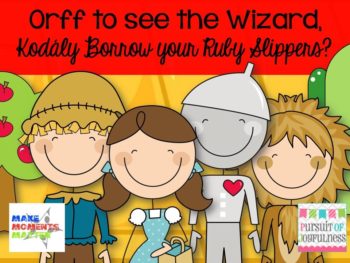 One of the things that I love about being a music educator is that there are a ton of ways to teach music to children. Some of us dwell on rhythm, drums, percussion instruments, and improvisation. Some people spend the bulk of their time sitting around a guitar or a piano or singing in large groups. Some people focus mainly on reading printed music and exclusively thinking about written notation. There is no one perfect way to teach music that will fit all people and all situations but there many varied theories and practices that can help you along the way.
One of the things that I love about being a music educator is that there are a ton of ways to teach music to children. Some of us dwell on rhythm, drums, percussion instruments, and improvisation. Some people spend the bulk of their time sitting around a guitar or a piano or singing in large groups. Some people focus mainly on reading printed music and exclusively thinking about written notation. There is no one perfect way to teach music that will fit all people and all situations but there many varied theories and practices that can help you along the way.
Two of the most popular pedagogies in the United States today revolve around the teaching of Zoltan Kodály or Carl Orff. Maybe you’ve been curious about the similarities and differences between these two practices. Maybe you follow one pedagogy exclusively. Maybe you have no idea about either set of practices. I personally follow the teaching and methods of Carl Orff and his contemporaries. However, I’ve always had a huge respect for Kodály teachers and have wanted to know more about how that practice works.
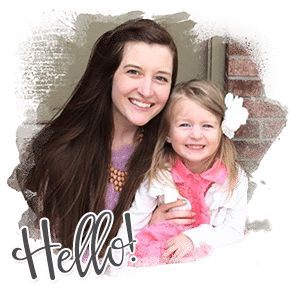 That’s why I’m so excited to invite guest blogger Lindsay Jervis, from the Kodaly Inspired Classroom blog, to come and share a little bit about the Kodály method and how it works in her classroom. Through the questions below you’ll see some of our insights about how the the two methods differ and also what makes them similar. Lindsay is an amazing teacher and blogger and I’m excited to hear what she has to say. I’m doubly excited to share this conversation with Lindsay because she is a fellow Kansas music educator! If you also teach in Kansas or the surrounding states, check the bottom of this post to see how you can get involved in the Kodály/Orff worlds in and around Kansas!
That’s why I’m so excited to invite guest blogger Lindsay Jervis, from the Kodaly Inspired Classroom blog, to come and share a little bit about the Kodály method and how it works in her classroom. Through the questions below you’ll see some of our insights about how the the two methods differ and also what makes them similar. Lindsay is an amazing teacher and blogger and I’m excited to hear what she has to say. I’m doubly excited to share this conversation with Lindsay because she is a fellow Kansas music educator! If you also teach in Kansas or the surrounding states, check the bottom of this post to see how you can get involved in the Kodály/Orff worlds in and around Kansas!
From here on out Lindsay will answer for the Kodály Concept and David will be handling the Orff-Schulwerk. If you get to the end of this post and have questions for either of us, feel free to add them to the comment section or contact either of us through our Facebook Pages. And be sure to head over to Lindsay’s blog when you’re done reading here… it’s pretty amazing and has some really fantastic resources that you’re going to want to see!
Where did this training get its name?
Kodály: The Kodály Method, or Concept is attributed to Zoltán Kodály. Kodály was very discouraged by the quality of music education in the schools in Hungary in the 1920’s. He promoted that music needed better teachers, a better curriculum and sequence for teaching, and that music instruction should begin at a younger age and occur more frequently (daily).Orff: Orff-Schulwerk (schoolwork) was developed over the course of several decades during the first half of the 1900s in Germany. Though there were many collaborators and teachers involved, the bulk of the pedagogy came from the collaboration of Carl Orff and Gunild Keetman. These two conceived an approach to building musicianship in every learner through the integration of music, movement, speech, and drama. None can deny the contribution of Keetman, though her name is not included in the title of the approach.
Where did this training come from?
Kodály: Although it is attributed to him, Kodály really just collected what was best in music education at the time from others namely rhythm syllables (ta, titi, etc.) created by Emile-Joseph Chêvé, rhythmic movement, inspired by Dalcroze, Curwin hand signs, and moveable do solfege.Orff: The Schulwerk was developed in Germany during a time of great upheaval and change, namely the decades surrounding World War II. Though they faced a great deal of hardship, Orff and Keetman persisted in research of methods and principles of music education right up to the point of the banning of their work and the closing of their school by the Nazis. The development of the Schulwerk carried on after the War, though many things were significantly changed (for example all their original instruments were destroyed in a bombing).
What’s a brief summary of how this approach works?
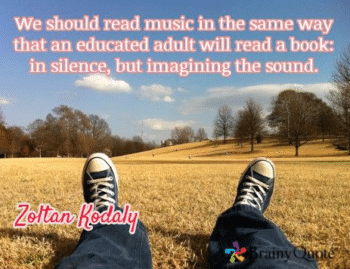 Kodály:This method is based on the idea that music should be taught to children in a way that is sequenced in line with the development of the child, leading to musical literacy. During our levels training, Kodaly teachers collect and analyze hundreds of folks songs to determine what concepts that song is good for teaching. We look at the rhythms from easiest to most difficult, solfege (pitches and patterns), meter, form, and a few other things. From there we can sequence our entire folk song collection from Kindergarten through 5th grade (or whatever grades we teach). When working on a concept, we always go through a “Prepare-Present-Practice” sequence. During the prepare stage, we are basically getting that new concept in their voices, ears, bodies, and eyes. This looks and feels like play to our kids. Preparing a concept can take anywhere from a couple lessons to months. During the presentation of a rhythmic concept, the teacher shows the the new rhythm, how it is notated, how we speak it (ta, titi, etc.). When presenting a melodic element you would label the new pitch, show where it would go on the staff, and show its hand sign. From there you would immediately begin practicing that concept.
Kodály:This method is based on the idea that music should be taught to children in a way that is sequenced in line with the development of the child, leading to musical literacy. During our levels training, Kodaly teachers collect and analyze hundreds of folks songs to determine what concepts that song is good for teaching. We look at the rhythms from easiest to most difficult, solfege (pitches and patterns), meter, form, and a few other things. From there we can sequence our entire folk song collection from Kindergarten through 5th grade (or whatever grades we teach). When working on a concept, we always go through a “Prepare-Present-Practice” sequence. During the prepare stage, we are basically getting that new concept in their voices, ears, bodies, and eyes. This looks and feels like play to our kids. Preparing a concept can take anywhere from a couple lessons to months. During the presentation of a rhythmic concept, the teacher shows the the new rhythm, how it is notated, how we speak it (ta, titi, etc.). When presenting a melodic element you would label the new pitch, show where it would go on the staff, and show its hand sign. From there you would immediately begin practicing that concept.
Orff: Orff believed that the best music education for children was never to be taught as a stand alone subject. He said, “Elemental music is never just music. It’s bound up with movement, dance and speech, and so it is a form of music in which one must participate, in which one is involved not as a listener but as a co-performer.” With participation being of upmost importance, Orff said, “Experience first, then intellectualize.” Students echo, sing, clap, play, move, listen and so much more. They experience possibilities as they actively participate and make choices that affect the final product. One of the most fascinating elements of this approach is the focus on expressive movement. The Gunther school (where this movement really started) was not a music school but a school for dance and gymnastics. Orff and Keetman believed that music and movement were tied so closely together that you couldn’t really have one without the other. Students would improvise dances to fit the music they heard and would then sit down and improvise music to fit the dance elements that they saw their peers performing.
Name five words or phrases that you think describe this approach.
Kodály: Singing, Developmentally Appropriate, Sequenced, Literacy, Joyful
Orff: Collaboration, Possibility, Rhythm, Creativity, Integration
If you were teaching a new folk song to students, how would your approach suggest you tackle the project?
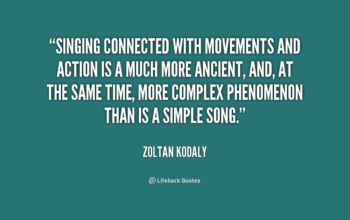 Kodály: In my Kodaly training we learned so many ways to teach a folk song. I think Jo Kirk had 100 ways to teach a new song, but I believe the most powerful way is through play and movement. My students will pick up on a new folk song very quickly if it is taught through a singing game. The children want to repeat the game; therefore, the music must continue in order to play the game. I heard somewhere that the students need at least five hearings before they will be able to sing a new song accurately. This was pretty new to me as I would always invite kids to sing along as soon as possible. As soon as they start singing, the stop listening and can often sing correctly. A few ways to get away with multiple listenings are to tell a story and use the song throughout the story, ask students a question of something to listen for in the song “What color was Mary wearing?”, and of course teaching it through the game!
Kodály: In my Kodaly training we learned so many ways to teach a folk song. I think Jo Kirk had 100 ways to teach a new song, but I believe the most powerful way is through play and movement. My students will pick up on a new folk song very quickly if it is taught through a singing game. The children want to repeat the game; therefore, the music must continue in order to play the game. I heard somewhere that the students need at least five hearings before they will be able to sing a new song accurately. This was pretty new to me as I would always invite kids to sing along as soon as possible. As soon as they start singing, the stop listening and can often sing correctly. A few ways to get away with multiple listenings are to tell a story and use the song throughout the story, ask students a question of something to listen for in the song “What color was Mary wearing?”, and of course teaching it through the game!
Orff: My teaching approach for introducing a new song will change a bit depending on the grade of the student, but the technique that I use is generally the same. I start with experience where the students hear the melody and words and echo through basic repetition. Once they begin to master the main melodic line I start to introduce a new rhythmic element like a steady beat or maybe an ostinato. Often this is introduced through body percussion or movement. The new element might turn into a part played on a percussion instrument, whether that be pitched or nonpitched percussion. As students master this concept another layer is introduced, again through basic repetition and experience. Piece by piece the greater song is slowly worked out from basic to complex as new parts are gently added to create a greater whole. A finished song might involve a few parts or a multitude of different instruments, movements, vocal parts, and more. From a teacher’s aspect, Orff-Schulwerk is a process of breaking down each activity into its simplest form and then presenting those steps one at a time to eventually become a completed performance.
Do you need a lot of instruments/books/training to make this approach work?
 Orff: Orff-Schulwerk is often known for the instruments involved, the xylophones, metallophones, glockenspiels, other nonpitched percussion instruments, and recorders because they have been a part of the Schulwerk from the very beginning. However, a successful Orff based classroom can operate very well with just a teacher, students, and a few instruments. The Schulwerk is more about the process of experiencing the music and the ways that all students can be involved in the music making. You don’t need all the instruments, but the beauty of having an “instrumentarium” at your disposal is that you have an infinite combination of options when you arrange a song. While there is an emphasis on freedom and student driven choice, I will say that I would not be as free to teach and mold musical moments if it weren’t for my Orff-Schulwerk levels training. I had been to a variety of weekend-long workshops and inservices, but nothing prepared me for teaching like the Levels did. Through that training I really learned the process of how to teach, how to effectively add instruments into the process, and what things I could do to encourage expressive imitation and improvisation.
Orff: Orff-Schulwerk is often known for the instruments involved, the xylophones, metallophones, glockenspiels, other nonpitched percussion instruments, and recorders because they have been a part of the Schulwerk from the very beginning. However, a successful Orff based classroom can operate very well with just a teacher, students, and a few instruments. The Schulwerk is more about the process of experiencing the music and the ways that all students can be involved in the music making. You don’t need all the instruments, but the beauty of having an “instrumentarium” at your disposal is that you have an infinite combination of options when you arrange a song. While there is an emphasis on freedom and student driven choice, I will say that I would not be as free to teach and mold musical moments if it weren’t for my Orff-Schulwerk levels training. I had been to a variety of weekend-long workshops and inservices, but nothing prepared me for teaching like the Levels did. Through that training I really learned the process of how to teach, how to effectively add instruments into the process, and what things I could do to encourage expressive imitation and improvisation.How has this approach to music education changed your teaching?
Kodály: I took my Level 1 training right away after my first year of teaching. My first year was rough. I was traveling between three schools daily and didn’t feel like I knew what to do or when. Then next year I took a job back home and took my first Kodaly level. It was like a fresh new start that second year. I felt so good about what I was accomplishing with my kids. I am just so amazed what my students are capable of – things that I couldn’t even do when I entered college!Orff: Scaffolding is always something that’s difficult for new teachers to master and I was no exception. When you first start teaching you have to learn how to break a complex task into its component parts and teach students how to create something wonderful, starting with the simple and moving to the complex. Orff Schulwerk gave me a strong foundation and helped me see the connection between the simple start to the multi-faceted finish. At the same time the Schulwerk really helped me to understand the infinite variety that was at my fingertips if I allowed the students to take ownership and join in the music making process. Following the Orff process I was able to let go of some of my anxiety and a little bit of my Type A control and in the process I was able to help students feel free, confident, and capable.
What do you love about this technique?
 Orff: I love the freedom and options that I have when I teach a song to students. Improvisation is encouraged to allow children to explore the possibilities in music and because improvisation occurs naturally and differently in each situation, a huge variety of musical moments occur. I could teach the same song to 4 different classes and get four completely different musical products depending on the way that the students respond to the music and the text. Imitation, experimentation, and personal expression occur naturally as students become confident, life-long musicians and creative problem solvers.
Orff: I love the freedom and options that I have when I teach a song to students. Improvisation is encouraged to allow children to explore the possibilities in music and because improvisation occurs naturally and differently in each situation, a huge variety of musical moments occur. I could teach the same song to 4 different classes and get four completely different musical products depending on the way that the students respond to the music and the text. Imitation, experimentation, and personal expression occur naturally as students become confident, life-long musicians and creative problem solvers.Certification — Levels Training
Kodály: I went through my certification levels at Wichita State University, which is endorsed by OAKE. I would without a second thought recommend it to anyone and everyone considering it. As I have said before, it is life altering. Each level is two weeks (three summers to complete the certification), and goes from 8:30 in the morning to 5:30. Your day would include choir, solfege, conducting, folk song analysis and research, pedagogy, and on some days a special topic which can range from folk dancing, to puppets, to “gem” songs, to early childhood. They like to mix it up every year. The levels instructors are inspiring and are there to help you become the best musician and teacher that you can be for your students. It is definitely an intense two weeks, but it will mold and shape your teaching in ways you cannot imagine. You can find more information about the certification levels at kmek.org under the the “certification courses” tab and also at wichita.edu/kodaly Orff: I just completed Level II of the Orff-Schulwerk training at Baker University in Baldwin City, Kansas and I can guarantee that I’ll be back next summer for Level III. The training includes two weeks of singing, playing percussion instruments, improving recorder skills, exploring movement techniques, and much more. We spend a huge amount of time playing games, experiencing folk dances and cultural movement, and improvising in new and exciting ways. I can honestly say that I feel like a much more accomplished musician and am a much more capable teacher even after only two levels of the training. It expands your worldview and helps you see how so many different aspects of music education can fit together in a flawless and exciting way. Check out more information about Levels training in your area by checking out this link on the AOSA website or learn more about how to certify at Baker University by going to this page sponsored by the Kansas Orff Chapter.
Professional Organizations — National Level
Kodály: The National Organization for Kodaly is OAKE (Organization of American Kodaly Educators). Within that, there are regions and state organizations.
Orff: The American Orff Schulwerk Association (AOSA) is the umbrella organization that covers all organizations in the United States. It’s a great place to start when looking for local chapters and resources.
Professional Organizations — Local Chapters
Kodály: Locally, in Kansas, we have a Kodaly chapter, KMEK (Kodaly Music Educators of Kansas). I am president-elect of this organization and we host three different workshops per year. You do not have to be an OAKE member to attend, but you do get a discount if you are! We bring in top notch Kodaly educators and I have left each workshop very inspired and supercharged for my classroom.
You can always find out more info about KMEK, the Kodaly Certification Courses, and upcoming workshops at http://www.kmek.org/
Orff: Kansas has a couple options if you’re interested in joining a local chapter. The Heart of America (HOA) Orff Chapter serves the Greater Kansas City area and the Kansas Orff Chapter (KOC) welcomes members from all across the state of Kansas. Both organizations provide a variety of workshops throughout the school year and if you’re a member of one you get member-pricing for admission at events held by either. The workshops that the KOC and HOA chapters provide are amazing! In recent years, our local Orff chapters have brought in presenters like Artie Almeida, Jeff Kristke and Randy Dellelles (the brains behind the Gameplan curriculum), and many others to Kansas City to present an “Orff and Running” worship!You can get more information about the Kansas Orff Chapter or the Heart of America Orff Chapter by visiting these sites.
http://www.kansasorff.org/
http://hoaorff.org
Book Recommendations for Further Insights
Good websites for further exploration
http://teachingwithorff.com/
http://www.orff.de/en.html
http://aosa.org/resources/advocacy/http://musiced.about.com/od/lessonplans/tp/orffmethod.htm
http://www.classicsforkids.com/teachers/training/orff101.asp
We hope that through this blog post you learned a little bit about the Kodály Concept and Orff Schulwerk and have a better understanding about what makes each method unique. We’d like to stress that we don’t think one is better than the other but think that the two methodologies can be used together to make an amazingly cultured and collaborative classroom. Don’t align yourself exclusively to one practice or idea just because, but use what practices work for you and your students to create the best possible musical experience.
Thanks again to everyone for reading and a HUGE thanks to Lindsay Jervis from the Kodály Inspired Classroom blog for her wonderful insights. Be sure to head over to her blog and see what other great ideas she has to share.

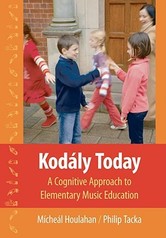

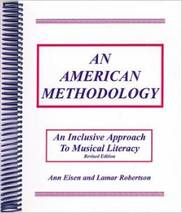
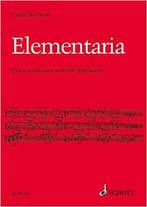
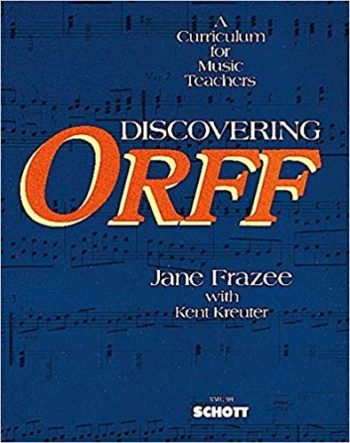

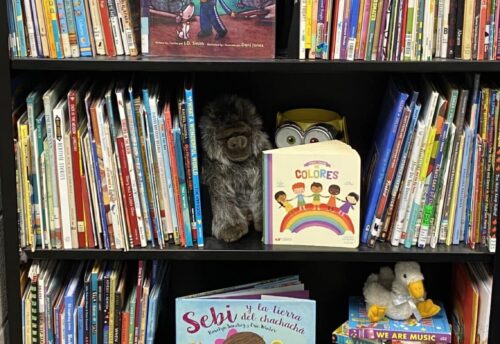
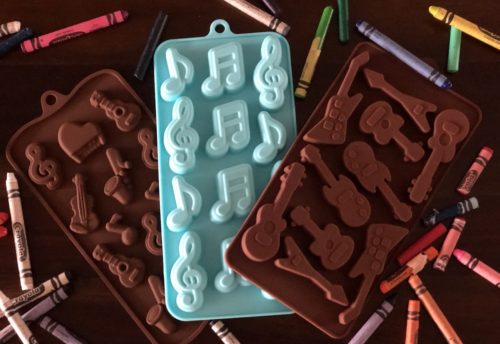

14 Comments